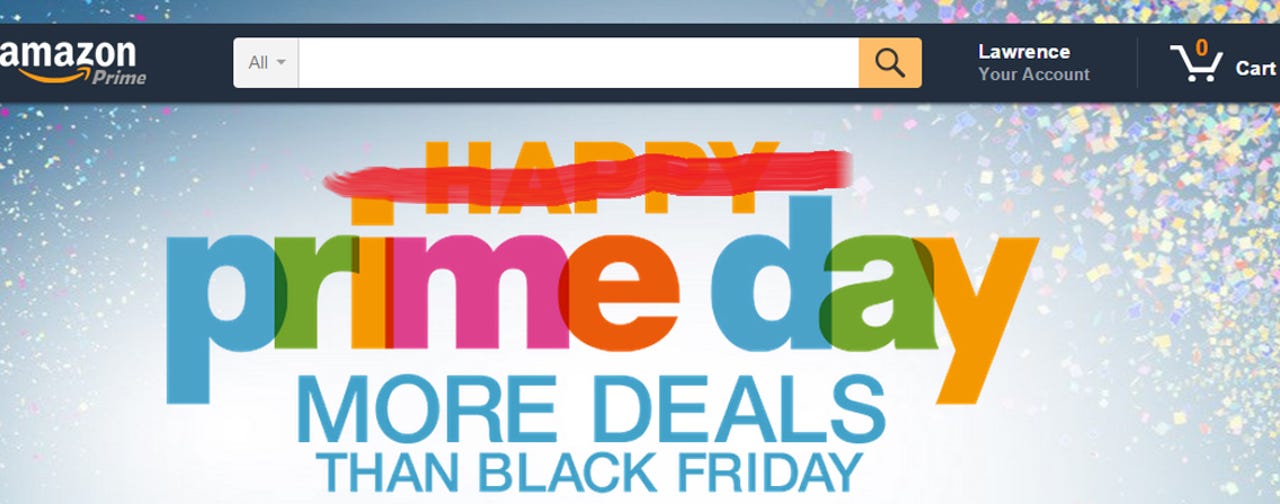Amazon Prime Day takes lumps, needs better execution


Amazon's Prime Day, billed as an e-commerce bonanza akin to Black Friday, may give the e-tailing giant a few scars.
Prime Day is designed to lure shoppers into becoming Amazon subscribers to its shipping program. An Amazon spokesperson said demand was better than Black Friday:
Prime Day peak order rates have already surpassed 2014 Black Friday. Prime members have bought tens of thousands of Fire TV Sticks, 35,000 Lord of the Rings Blu-Ray sets, 28,000 Rubbermaid sets, and 4,000 Echos in 15 minutes. The Kate Spade purse was gone in less than a minute.
Amazon's move was to offer deals to Prime members and convince non-subscribers to join the team.
Featured
But Amazon's sale was a bit of a giant clearance outlet with a yard sale mixed in. Sure, there were deals, but the goods were odd, as many Twitter fans noted.
Meanwhile, a deal on an Echo had me interested, but the site got hung up on a "checking deal status." After a few reloads and more minutes than I care to admit, I was waitlisted. Apparently, the lightning deal was for a handful of Echos at the most.
Previously: Amazon takes on Black Friday with Prime Day deals
Add it up and Amazon failed to hit me with the recommendation and personalized data mojo with its Prime Day. The game isn't to offer door busters to the masses as much as it is to reach Prime members with personalized pitches. Then we Prime members would tell our friends.
Instead, Prime Day became a Prime pitch. Perhaps you'll be lured by that fancy pencil sharpener, but it's far more likely you'll see a bunch of things and move on.
Exhibits A and B:
And the quips in 140 characters keep coming at #PrimeDay.
Now maybe Prime Day will still work, but the execution could have been better. Notably, Amazon's data and targeting needed work. The barrage of deals was more discount store than high end.
Why does Amazon's Prime Day execution matter?
Amazon has two business growth priorities: Amazon Web Services and Prime. Those two businesses can drive profit and revenue. Amazon had 10 million users trying Prime in the latest holiday season. Amazon has 35 million Prime subscribers globally. These folks spend more money and aren't going to comparison shop.
Research from Millard Brown Dillard shows that less than 1 percent of Prime users will visit competing online retail stores when buying from Amazon.
Macquarie analyst Ben Schachter said in a research note:
Prime is the primary focus area of Amazon within the core retail business. Outside of AWS, we believe that virtually all investment from Amazon is centered on driving Prime growth. We believe that the program is the killer app for Amazon.
Through that lens, it may not matter whether Amazon takes a few Twitter hits. As long as it signs up a few Prime members, its big summer sale experiment will work out.